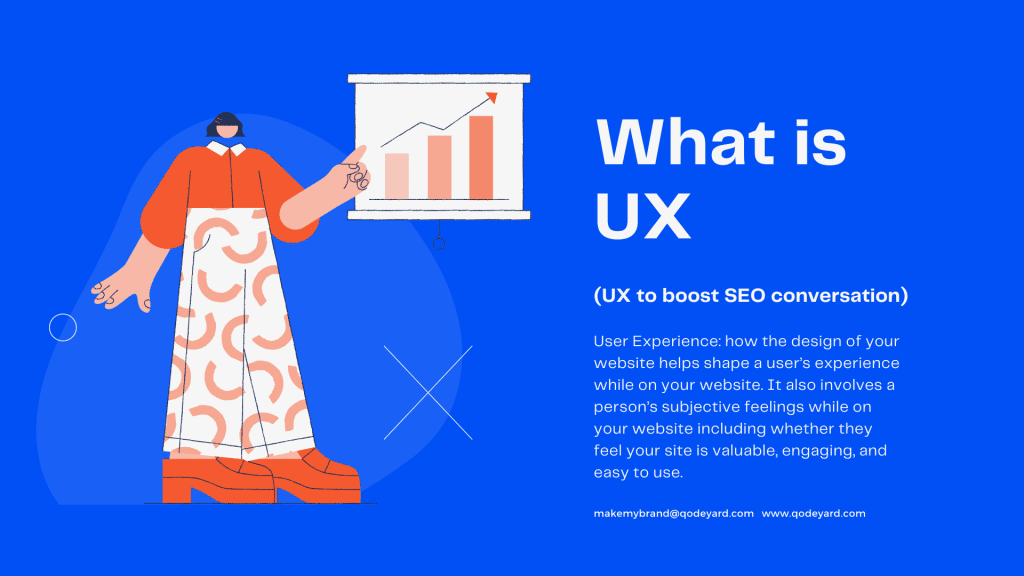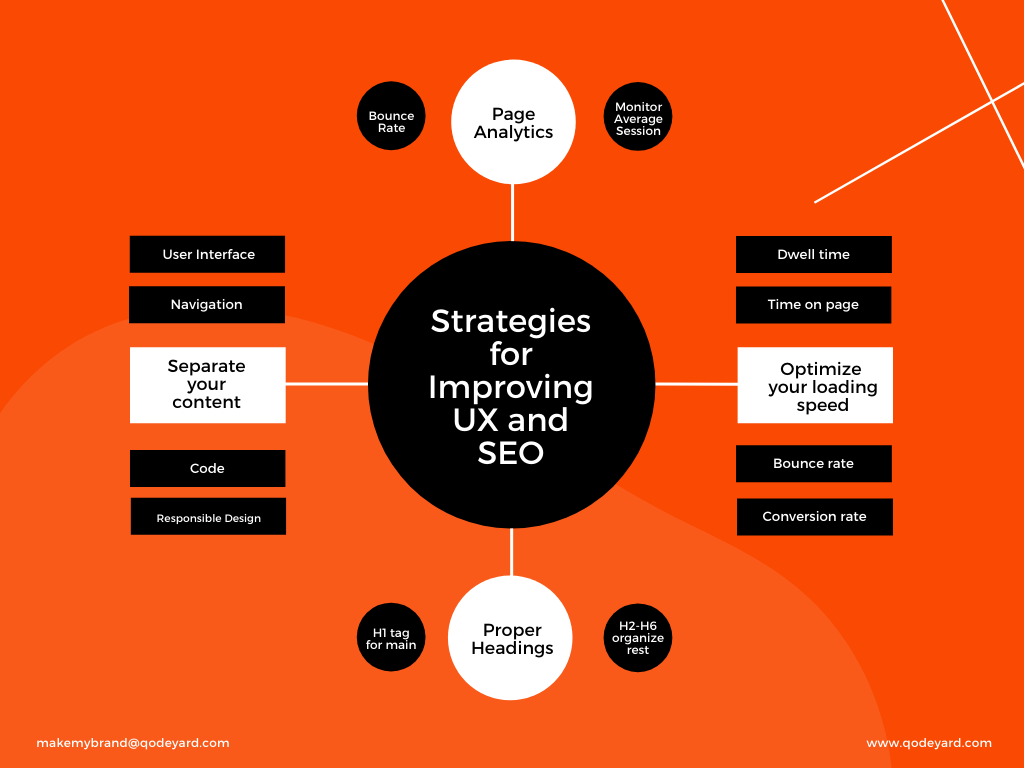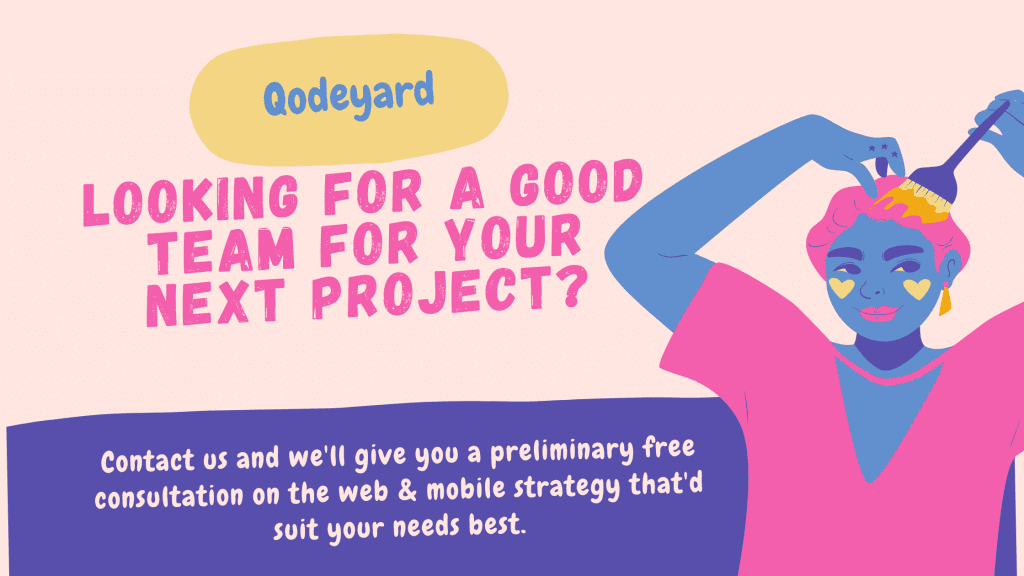Organic traffic, the kind brought through SEO marketing, covers over 51% of all traffic worldwide. It’s bigger than all of the other traffic sources combined and has an average conversion rate of 2%.
In reality, many websites have less than that because of poor user experience (UX) and user interface (UI). Millions of people land on webpages with no clear calls-to-action, an ineffective design and lackluster user experience.
In reality, many websites have less than that because of poor user experience (UX) and user interface (UI). Millions of people land on webpages with no clear calls-to-action, an ineffective design and lackluster user experience.
What is UX and how does it impact conversion?

In order to understand why a website isn’t converting as much as you’d like, it’s important to have a handle on the meaning of User Experience (UX), and how UX impacts your site’s likelihood of converting a given user.
UX can be summed up as how a person experiences your website while they’re navigating your webpages.
Is your site understandable, easy to navigate, and gives people a reason to engage with your content? Or, is your website frustrating, confusing, and not giving site visitors what they’re looking for?
Answers to these questions will give you insight into the status of your site’s UX.
It’s important to note that user experience is different than usability, though the terms are often used interchangeably:
- User Experience: how the design of your website helps shape a user’s experience while on your website. It also involves a person’s subjective feelings while on your website including whether they feel your site is valuable, engaging, and easy to use.
- Usability: how easy it is for people to interact with your website and find what they’re looking for. It also refers to the technical effectiveness of your website, including how easy it is to learn, how many errors are on it, and how functional it is.
UX and usability often overlap. The key difference is that your goal for usability is that your website is easy to use. When it comes to user experience, the main focus is the user’s perception while interacting with the site.
So, now that you know what UX is and how it differs from usability, you might be asking yourself what user experience has to do with SEO.
The easiest way to think of the partnership between SEO and UX is like this:
- SEO targets search engines and rank you high or low depending on the success of your efforts
- User experience targets your site visitors once they land on your website and start interacting with your webpages.
Without SEO, you’ll have no traffic coming to your website; and without a good user experience, your site’s SEO will suffer. And so the circle goes round and round.
Altogether, Google ranks websites based on many ranking factors such as quality of content, keywords, image optimization, inbound links, site structure, and readability.
Yet, there’s more to content than just answering search queries, having fast loading images, and providing quality backlinks. If your site is slow to load, confusing to navigate, or just plain boring, Google won’t consider it one of the best results and will rank you low in search results.
That’s why focusing on user experience is so crucial to your success as a website owner.
Strategies for Improving UX and SEO

Pageviews
Think about it:
If a user visits multiple pages on your site, something is keeping them there.
Generally (but not always), more pageviews means users are actively engaging with your website.
The “not always” part: If your pageviews are high and your conversion rates are low, it could mean that your website is built in a confusing way, pushing users from page to page in search of the information they need.
Dwell time
Dwell time is a different metric from pageviews in that it factors in the total time a user spends on a given website before returning to SERPs, rather than the amount of total pages a viewer visits.
Higher dwell time is a positive ranking factor, and it’s an integral part of Google’s RankBrain machine learning algorithm.
But since we’re not talking about SEO here, it’s also important to note that Google perceives higher dwell time as correlated to a better user experience.
If that’s how Google feels, that’s probably how you should too.
Time on page
Time on page is a very similar metric to dwell time, but it refers to the total amount of time users spend on your site between interactions before going anywhere else, whereas dwell time only kicks in as a metric if users return to SERPs after viewing your site.
The UX implications are the same, however. More time on page means a higher level of engagement and a higher likelihood for conversion.
Bounce rate
Bounce rate is a measure of the percentage of single page sessions on a given site without additional pageviews or interaction events. If a user gets to your website, views one page, and clicks the back button, it counts as a bounce.
Bounce rate can be a misleading metric, because while a higher bounce rate is typically considered bad, a conversion driven page such as a sales landing page is often meant to work independently from the rest of a website.
In these cases, a higher bounce rate should be expected, but overall, a high bounce rate is often a signal that a page isn’t giving users what they’re looking for.
Conversion rate
There are different ways to measure a website’s conversion rate.
At the most basic level, it’s a measure of how many total visits a site receives relative to how many of these visits turn into a conversion.
This “conversion” can be a form submission, an online purchase, a phone call, or any other form of “opt in” by a user. Ultimately, it depends on the goals of the website.
Conversion rates are the most significant metric when it comes to understanding how your website is performing.
Read: Importance of digital marketing for businesses growth in 2021
Use Proper Headings
Headings are the roadmap guiding your site visitors through your content. They’re also the way search engine crawlers understand the purpose of your website.
In fact, proper heading use makes it easier for both site visitors and search engines to see what your content is about.
Use Proper Headings
Headings are the roadmap guiding your site visitors through your content. They’re also the way search engine crawlers understand the purpose of your website.
In fact, proper heading use makes it easier for both site visitors and search engines to see what your content is about.
This way people can understand the primary focus of your page and crawlers can index your site under the right categories in search results.
In addition, keep your h1 tag near the top of your webpage and make sure to include keywords in it, preferably at the beginning of the page’s title. You should only use one H1 header per page, per good design and accessibility practices.
Conclusion
SEO traffic is one of the main sources of web traffic globally. Because of this, you’ll encounter multiple types or personas of users. Knowing how to analyze their behaviors and working to give them a better experience on your website will improve your chances of converting and give you better results in the long run.
Qodeyard is a collective of digital enthusiasts who’re focused on innovating consumer experience through thoughtful design. We wear many hats. To some, we are a UX/UI Design company, a web development company to others, a branding company to more, but to all, we are a reliable, end-to-end, creative digital solution agency. For further enquiries, contact us today!



